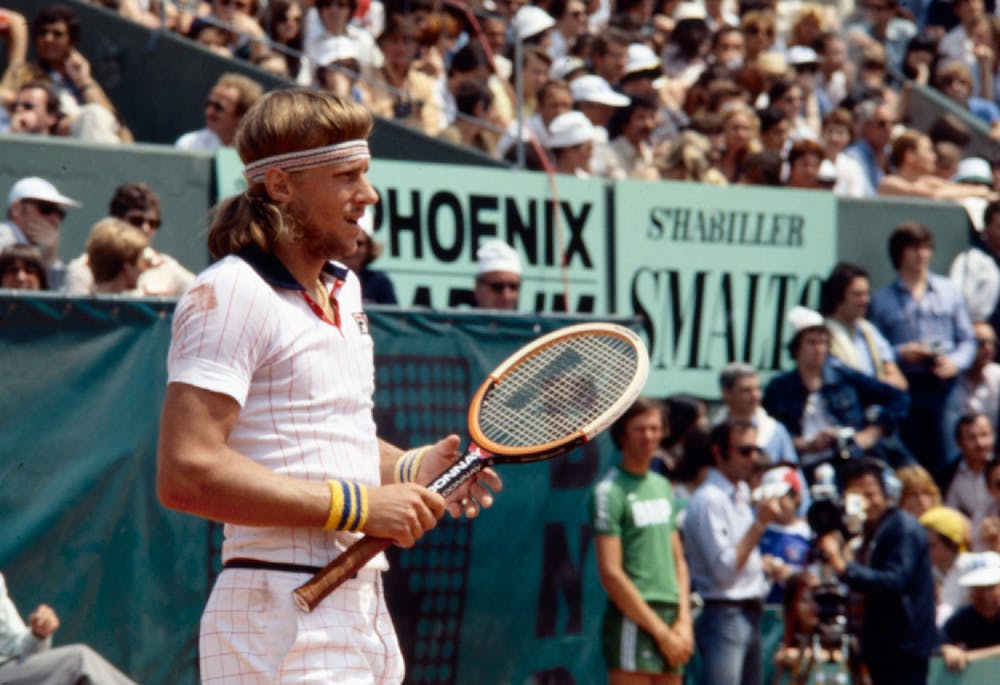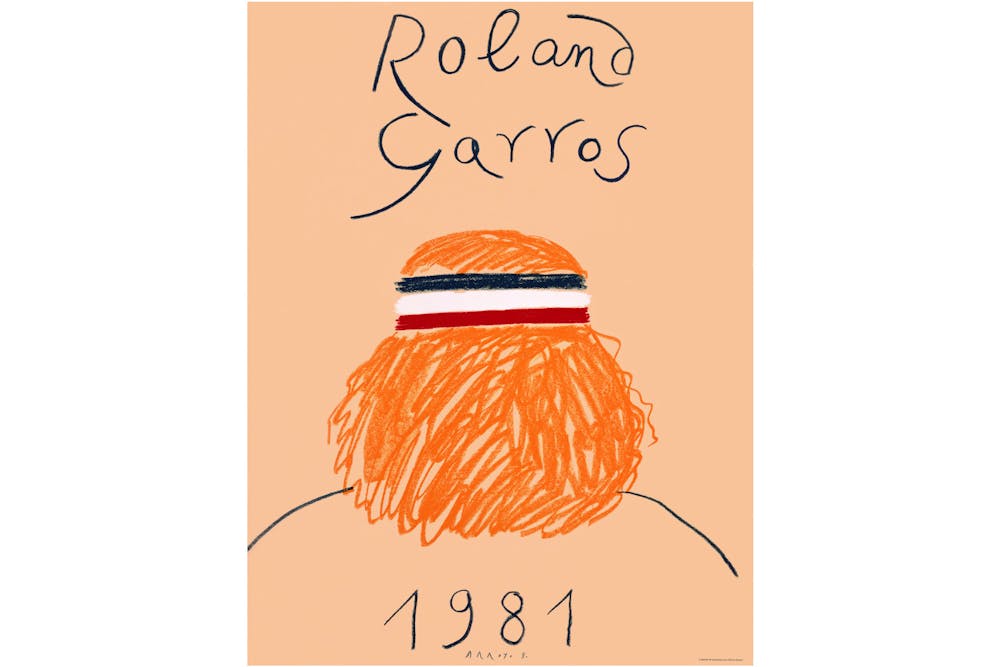Loved, hated, ice-cold, powerful: Björn Borg completely rewrote tennis history and dominated world tennis from the mid-70s to the early 80s.
Here is everything you need to know about the iconic “Iceborg”, an everlasting idol of the courts.
Here is everything you need to know about the iconic “Iceborg”.

Loved, hated, ice-cold, powerful: Björn Borg completely rewrote tennis history and dominated world tennis from the mid-70s to the early 80s.
Here is everything you need to know about the iconic “Iceborg”, an everlasting idol of the courts.
A true superstar and icon of his generation, Björn Borg was a textbook child prodigy. At the age of 9, he attended a table tennis tournament in which his father was competing near Stockholm, Sweden. Borg senior won a tennis racquet and gave it to his son. The very next day, Björn started playing tennis and fell madly in love with the sport! This was the first day of the rest of his life and marked the beginning of an illustrious career.
In 1974, a year after reaching the Round of 16 in his debut appearance, he became the youngest-ever Roland-Garros champion at just 18 years of age.

With a playing style that combined power with concentration, this exceptional player possessed two particularly remarkable qualities: the first was his mindset. Björn Borg was the first player to display unfaltering focus on the court: nothing could distract him. This earned him the nickname "Iceborg".
Because of this, he was unbeatable, and his opponents often felt like they were playing against a brick wall. His second exceptional quality was his technique. Far from adopting a conventional playing style, he produced incomparable topspin from his two-handed backhand and boasted a formidable forehand.
Björn Borg’s career was scattered with records. Between 1978 and 1980, he won every Roland-Garros and every Wimbledon tournament. From 1976 to 1980, the Swede won the London tournament five consecutive times. His victory against John McEnroe in 1980, after 3 hour 53 minutes of play and five sets, went down in history.
He was just as masterful at Roland-Garros, where he won four consecutive tournaments between 1978 and 1981 and achieved the Roland-Wimbledon double on three occasions, a real feat. Borg long held the record for the most wins at the Porte d'Auteuil, with six titles, before Rafael Nadal clinched his seventh Roland-Garros title in 2012. At the US Open, however, he seemed to be cursed… Borg lost in the final four times: to Connors in 1976 and 1978, and to McEnroe in 1980 and 1981. Björn Borg never managed to win the Grand Slam in New York.
Borg – almost invincible – dominated world tennis for seven whole years during the 1970s. He was world No.1 in 1979 and 1980 and retired from competition in 1983, at just 26 years of age, leaving a great legacy behind him. To date, he is the only player to have won Roland-Garros and Wimbledon at least three times each.
Striped shirt, short shorts, towelling headband and mullet hairstyle … Björn Borg’s look was recognisable a mile off !
With his iconic style, which made him look like the fifth member of pop group Abba, Borg was the first tennis player to be so famous across the globe. He caused absolute hysteria amongst his fans, as much as any Hollywood actor or rock star.
At his Wimbledon debut in 1973, after reaching the Round of 16 in his first appearance at Roland-Garros, the handsome Swede, who was just 17, caused quite a stir with his cool Nordic persona and his irresistible blonde locks. “Borgmania” had begun!
Advertising contracts, scenes of collective hysteria, television appearances… He became a true celebrity thanks to his powerful image and his impressive sporting achievements, moving tennis firmly into the “Borg era”.
His stardom stoked the public’s enthusiasm for tennis as a sport, and Borg was one of the first great tennis champions to incite amateurs to pick up a racquet.

Just like Chris Evert, Borg featured in the famous "Athletes" series created by Andy Warhol, which included ten portraits of great athletes from the 1970s.
In 1981, it was the turn of Eduardo Arroyo – a master of figurative art – to immortalise the emblematic silhouette of this “rock star of the courts”. That year, Arroyo created the official poster for the Parisian tournament, the second in a series of posters created for Roland-Garros. Arroyo had no desire to depict the usual symbols (tennis racquets, balls, red clay), and instead decided to draw inspiration from the tournament’s most topical news by choosing a highly recognisable model…
Seen from behind, his blonde mane adorned with a headband, this character is a clear reference to Björn Borg who, since 1976, had ruled supreme over the tennis world. Arroyo was the first artist to depict a player at the peak of his career, while he was both alive and active.
This icon of tennis and of the Porte-d'Auteuil was the perfect embodiment of the tournament at the time! Roland-Garros and Borg were one and the same. Borg had just notched up four consecutive victories in Paris, and a few weeks later went on to win his sixth and final victory on the red clay at Roland-Garros, watched by crowds of jubilant spectators.